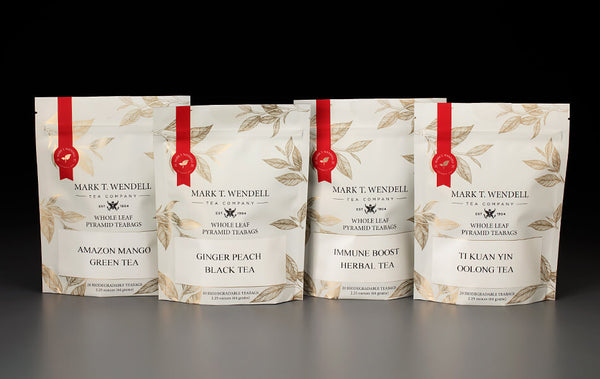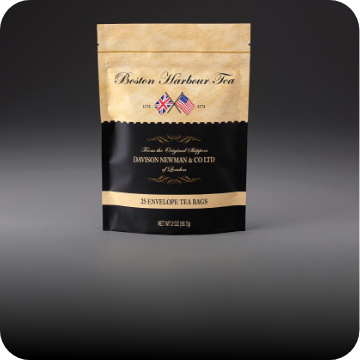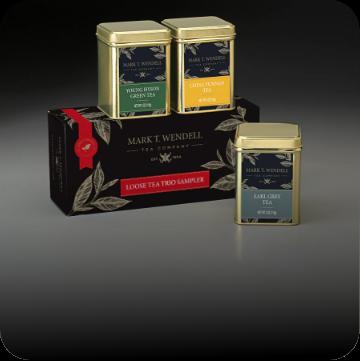The Origins of Tea
Where did tea come from? The world’s most widely consumed beverage has a fascinating story, and we're here to answer all your questions about the origins and history of tea. All true tea comes from the tropical plant known as Camellia Sinensis. Thriving in warm climates with long sunlit days, cool nights, and abundant rainfall, this plant grows at altitudes ranging from sea level to 7,000 feet — from Turkey in the north to Argentina in the south.
The finest tea is often cultivated at higher elevations, where some bushes can live and produce leaves for over 100 years. Today, tea bushes cover nearly six million acres of land and are harvested weekly throughout an extended growing season. Whether you're a tea enthusiast exploring its heritage or looking to buy the best tea online, understanding where it all began adds new depth to every cup. The following information provides further information on the colorful origins and history of tea.
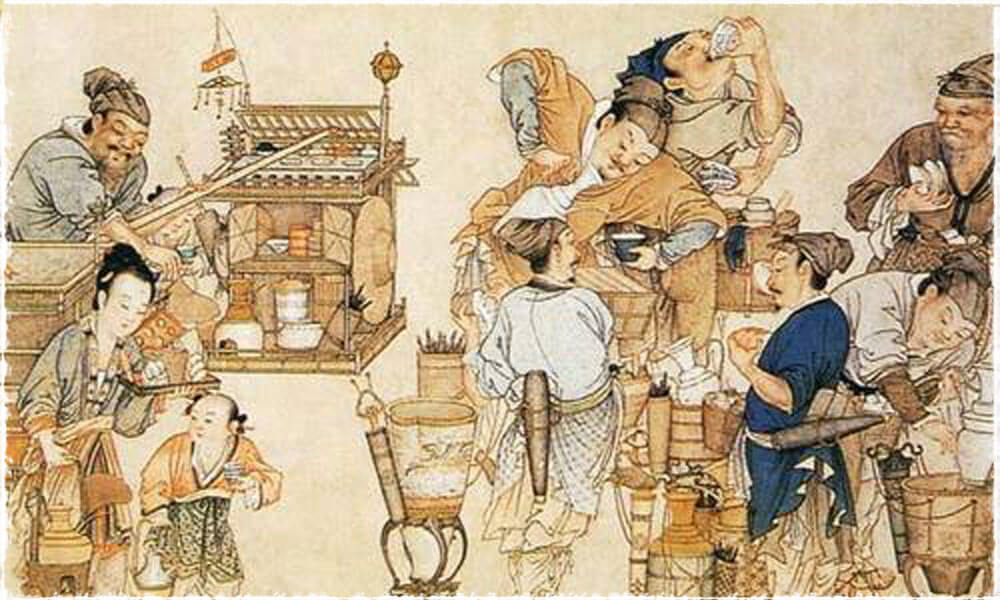
Early Uses of Tea in China
The origin and history of tea started in China around 2750 BC. During this time, the tea plant was found to have a number of medicinal properties. Legend says that an Emperor named Shen Nung was sitting in the shade of a wild tea tree, boiling some drinking water, when a breeze blew a few leaves from the tree into the pot and gave the water a flavor that he found delicious. He experimented further and found it to have medicinal properties and a pleasing flavor. He urged the Chinese people to cultivate the plant for the benefit of the entire nation. Over time, he has become the Legendary Father of Tea.
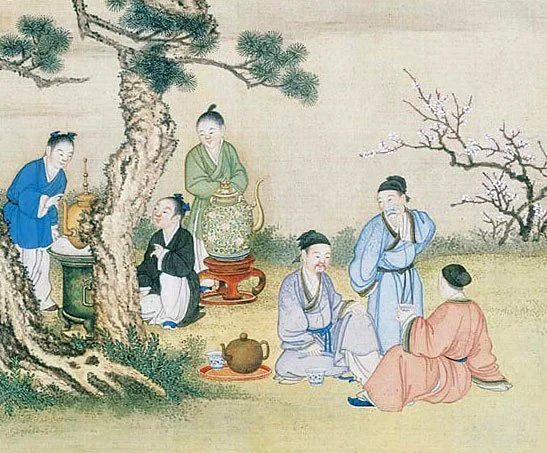
The Evolution of Tea in Chinese Dynasties
In the early days of tea consumption, the leaves were picked and boiled in water to produce a rather bitter brew. Tea leaves were used primarily as a medicine and secondly as a pleasurable drink. Tea took over 3000 years to become a popular drink throughout the Chinese empire. During the Tang Dynasty (600-900 AD), the popularity of tea was recognized by the imposition of a tax.
During the Ming Dynasty (1368-1644), steamed and dried loose tea leaves became popular; however, this style of green tea did not keep or travel well outside of China. In order to protect their crop, Chinese merchants started to roast their leaves to prevent them from rotting. The leaves that were left in the air to oxidize produced black tea (or red, as the Chinese call it.) This tea was manufactured mainly for export, and the Chinese, even today, continue to drink native green tea.
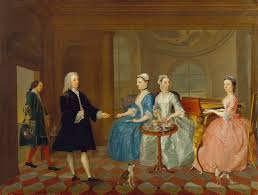
Tea’s Introduction to Europe
The Dutch were the first to drink tea in Europe, shipping it in 1610, with the introduction to Britain around 1650. It arrived a few years after coffee had reached England. It was through the coffeehouses that the new drink spread to the people.
In 1657, Thomas Garway, an English proprietor, had the idea of offering tea to the public, and it quickly became the drink of choice, far outpacing wines and liquors. Unfortunately for the government, Britain soon began to lose all the taxes associated with the sale of liquor. However, they quickly remedied the situation by imposing a tax on tea. Nonetheless, it was not until the early part of the next century that tea became a common beverage for the upper and middle classes. When coffee shops became too disreputable for respectable people, it was in the pleasure gardens of London that royalty, aristocrats, and ordinary working people took tea.
Today, tea continues to be enjoyed in a variety of ways. One particularly refreshing and health-conscious trend is enhancing its flavor with fresh fruits and herbs. If you're interested in learning more, check out this helpful guide on why green tea is a daily wellness game-changer.
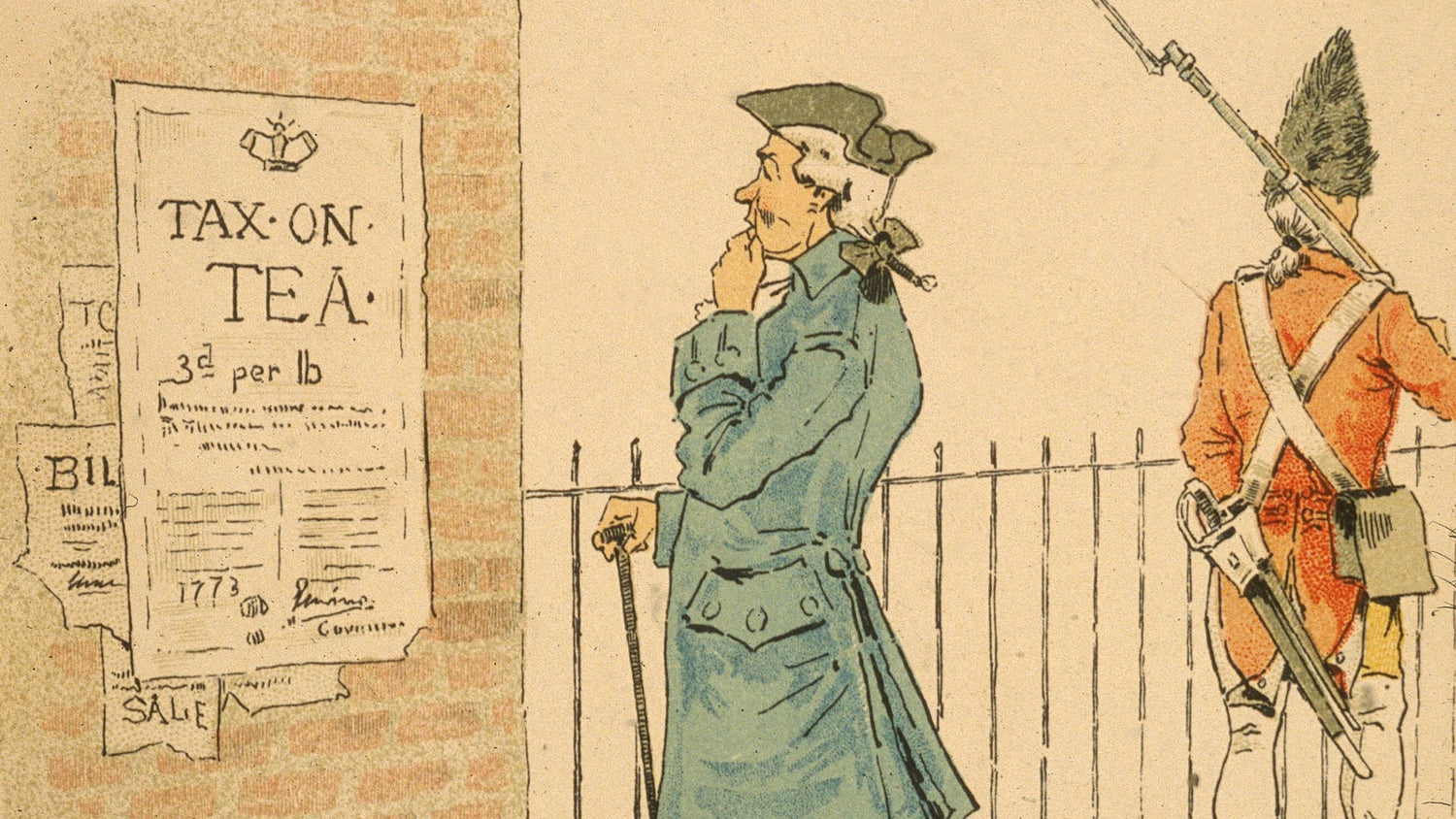
Tea and the American Revolution
In 1772, the tea tax was causing problems in Great Britain’s colonies in America. While many other taxes on goods bound for America had been repealed, the three pence per pound of tea remained firm. It was in place to offset the bankruptcy of the British East India Company. Over a five-year period, the colonies paid duty on almost 2 million pounds of tea. Enraged by the tea tax and other shipping restrictions, the Sons of Liberty attempted to block tea shipments from arriving in Philadelphia and New York.
On December 16, 1773, the Sons of Liberty let two ships sail into Boston Harbor. Disguised as Native American Indians, they emptied 342 large chests of tea into the harbor. This later came to be known as the Boston Tea Party. These actions by the colonists led the Parliament to pass a series of laws known as the “ Intolerable Acts”. They limited the political freedom of the citizens and ultimately led to the Revolutionary War. In many ways, tea helped provide a cause for American independence.
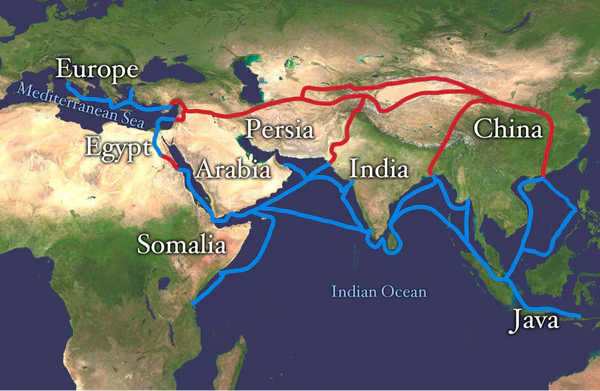
The Expansion of Tea Around the World
During the 19th century, tea drinking became essential to British social life. Tea parties and events were organized for all possible occasions, including family teas, picnic teas, tennis teas, and elegant afternoon teas. Over the years, housekeeping manuals and cookbooks gave clear instructions about teatime invitations, etiquette, brewing and serving methods, dress, and tableware. The tea party was the very symbol of elegance and prosperity.
Although the first tea was discovered in China by Emperor Shen Nong, several other areas of the world now contribute to the overall tea harvest. The first tea used in England originated in China, and it wasn’t until the 19th century that tea growing spread to Formosa and that indigenous tea was discovered in Assam. In 1839, the first Indian tea was sold in London. Around 1191, Japanese Zen priests brought tea seeds from studying abroad in China and began cultivating them in the southernmost part of Japan. The first tea in Africa was planted in the Cape in 1687 but did not progress until the latter part of the 19th century. The 20th century has seen the spread of tea in Africa, notably in Kenya, Malawi, and Tanzania.

The Rise of Specialty Tea in Modern Times
The American specialty tea market has quadrupled in the years from 1993-2008, now being worth $6.8 billion a year. Similar to the trend of better coffee and better wines, this tremendous increase was partly due to consumers who choose to trade up. Specialty tea houses and retailers also started to pop up during this period.
The Enduring Legacy of Tea
The origins and history of tea date back almost 5,000 years and tea itself now has more than 3,000 different variations. The world's most widely consumed beverage has historical and cultural importance that cannot be rivaled, with its roots answering the question of where tea originated, enriching our understanding of this beloved beverage.
Learn about different kinds of tea, their production processes, health benefits, expert tea brewing tips, and preparation techniques. Read more from the links below…
FAQ Questions and Answers
: invalid url input)
Where was tea first cultivated?
Tea was first cultivated in China, over 5,000 years ago. The earliest tea plants grew naturally in the mountains of southwest China, especially in the regions of Yunnan and Sichuan. Over time, Chinese farmers began cultivating tea on a larger scale, turning it into an important part of daily life and culture.
: invalid url input)
How was tea discovered?
According to ancient Chinese legend, tea was discovered around 2737 BC by Emperor Shen Nong. While boiling water outdoors, a few leaves from a nearby tea plant drifted into his pot. The aroma and taste impressed him, and he found the drink refreshing. That accidental discovery became the beginning of the world’s love for tea.
: invalid url input)
Where did tea originate from?
Tea originated in ancient China, where it was first used for its medicinal properties before becoming a popular beverage. From China, the habit of drinking tea spread to Japan, India, and eventually Europe, making it a global tradition.
: invalid url input)
What country invented tea?
China is recognized as the country that invented tea. The Chinese were the first to grow, prepare, and drink tea thousands of years ago. Their customs, rituals, and cultivation methods laid the foundation for the tea cultures we see around the world today.
: invalid url input)
When did tea become popular around the world?
Tea became popular globally during the 17th and 18th centuries, when European traders began importing it from China. It quickly became a fashionable drink in Britain, spreading throughout Europe and later to North America. By the 19th century, tea was being cultivated in places like India, Sri Lanka, and Africa, making it one of the most enjoyed beverages worldwide.







